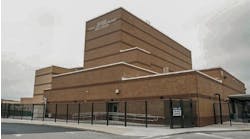The front page of the local newspaper the other day was dominated by a photograph of a former elementary school consumed in flames. The century-old facility once housed a public school, then a private school, but for many years has been vacant.
Sadly, the fate of the building was not surprising. Unless a school system immediately finds a buyer or is diligent about securing and protecting an empty building, a shuttered schoolhouse can become a magnet for vandals, thieves, squatters looking for warmth and others up to no good. In recent years, burglars have targeted empty schools across the country for the valuable copper inside.
The problem of what to do with vacant schools is unlikely to go away. Many districts, especially those with shrinking enrollments in urban areas, frequently find themselves with underutilized facilities and without the resources to keep them operating.
Another option — tearing down a closed school — eliminates most concerns about safety and security, but seems like giving up — surely there could be a way to save a building and its history, and convert it to some other use.
The ideal new tenant for an empty school would be another education institution. But some school districts squeezed by budget woes don't think so. They view private and charter schools as unwelcome competitors for students and funding.
Recently, a Kansas district sold a vacant middle school to a private developer, even though a nearby private school reportedly expressed interest in buying the campus. Then, shortly after the sale came word that the developer was talking with the private school about selling to it.
From the perspective of a school district focused on self-preservation, selling to someone other than the private school makes sense. But to a community that didn't want the school closed in the first place and probably would prefer to have the site remain operating as a school, the decision is a head-scratcher.
In the meantime, the private school will have to stay on its current campus — the one it bought more than 20 years ago from the school district when it wasn't viewed as such a competitor.
Kennedy is staff writer for AS&U.


